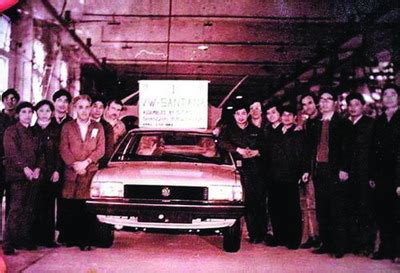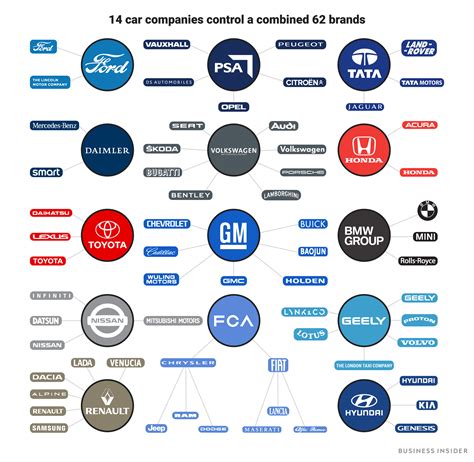Discover the history and impact of Auto Union in motor racing, its innovations, and legacy in modern cars, including its formation and role during World War II.
Formation of Auto Union
Contents
The Auto Union car company was formed in 1932 as a result of a merger between four major German automobile manufacturers: Audi, Horch, DKW, and Wanderer. The merger was orchestrated by the German engineer and industrialist Jorgen Skafte Rasmussen, who saw the potential for increased efficiency and market dominance by combining the resources and expertise of these companies. The result was the creation of a new company that combined the strengths of each of the individual brands, leading to the formation of the Auto Union logo that we recognize today.
The merger also brought together some of the top automotive engineers and designers in Germany, including Ferdinand Porsche, who played a key role in the development of the groundbreaking Auto Union Grand Prix racing cars that would dominate the international racing scene in the years to come. The formation of the Auto Union marked a turning point in the history of German automobile manufacturing, as it combined the strengths of several respected brands to create a new, unified entity with the potential to lead the industry in innovation and performance.
Despite the economic challenges of the time, the Auto Union was able to leverage its combined resources to develop new models and technologies that set new standards for automotive engineering. The formation of the company set the stage for a period of rapid growth and expansion, and laid the foundation for the company’s lasting legacy in the automotive industry.
Innovations in Auto Union Cars
Auto Union was one of the most innovative car companies of its time, constantly pushing the boundaries of what was possible in the automotive industry. One of the most significant innovations introduced by Auto Union was the use of a mid-engine layout in their racing cars. This design allowed for better weight distribution and improved handling, giving Auto Union an edge over their competitors on the race track.
Another major innovation was the development of the Auto Union Type C racing car, which was powered by a supercharged V16 engine. This engine was incredibly advanced for its time, producing over 500 horsepower and allowing the Type C to reach speeds of up to 211 miles per hour. This made it one of the fastest cars in the world, and a true engineering marvel.
In addition to their innovations in racing cars, Auto Union also made significant advancements in safety technology. They were one of the first companies to introduce four-wheel independent suspension on their road cars, improving both comfort and safety for drivers and passengers. This innovation set a new standard for handling and ride quality in the automotive industry.
Auto Union’s commitment to innovation and excellence in engineering is evident in the lasting impact they have had on the automotive world. Many of the technological advancements they pioneered continue to influence car design and engineering to this day, solidifying their legacy as one of the most innovative car companies in history.
Impact of Auto Union on Motor Racing
The Auto Union car company had a significant impact on the world of motor racing during its existence. With its innovative designs and high-performance vehicles, Auto Union changed the landscape of the sport in many ways.
One of the most notable impacts of Auto Union on motor racing was the introduction of the mid-engine layout. This design placed the engine behind the driver, which allowed for better weight distribution and improved handling. The Auto Union cars were some of the first to use this layout, setting a new standard for racing vehicles.
In addition to the mid-engine layout, Auto Union also made advancements in aerodynamics and engine technology. These innovations helped to improve the speed and performance of their cars, setting new records and pushing the boundaries of what was possible in motor racing.
The success of Auto Union in motor racing also had a lasting impact on the sport’s popularity and development. The company’s dominance on the racetrack drew in large crowds and increased interest in racing events, leading to the growth of the sport as a whole.
Overall, the impact of Auto Union on motor racing was immense, and its legacy continues to influence the sport to this day. The company’s innovations and successes set new standards for performance and design, shaping the future of motor racing for generations to come.
Auto Union During World War II
Auto Union had a significant impact on the events of World War II. As a leading manufacturer of vehicles, the company played a crucial role in supporting the German war effort. The production of military vehicles, including trucks and aircraft engines, was a major focus for Auto Union during this time. The company’s factories were heavily involved in the war production, with thousands of workers dedicated to supporting the German military.
Despite the challenges of wartime, Auto Union continued to innovate and develop new technologies. The company’s engineers worked tirelessly to improve the performance and capabilities of their vehicles, contributing to the overall strength of the German military. In addition to military vehicles, Auto Union also manufactured equipment and machinery essential for the war effort, further highlighting the company’s significance during World War II.
As the war progressed, Auto Union faced increasing pressure and constraints, particularly as resources became more limited. The company’s ability to adapt and overcome these challenges was a testament to its resilience and determination. Despite the difficult circumstances, Auto Union remained a key contributor to the German war machine, supplying essential vehicles and equipment crucial for the war effort.
After the end of World War II, Auto Union faced a period of recovery and rebuilding. The company’s facilities and infrastructure had been heavily impacted by the war, requiring extensive renovations and restoration. The legacy of Auto Union’s participation in World War II would continue to shape the company’s future, as it sought to rebuild and establish itself in the post-war era.
Legacy of Auto Union in Modern Cars
The legacy of the Auto Union company can still be seen in modern cars today. The innovative technologies and design principles that Auto Union developed have had a lasting impact on the automotive industry. One key legacy of Auto Union is its pioneering work in aerodynamics, which has influenced the design of modern cars to improve fuel efficiency and performance.
Furthermore, Auto Union’s focus on high-performance engines and lightweight construction has shaped the development of modern sports cars. The company’s emphasis on precision engineering and attention to detail has set a standard for quality that continues to inspire car manufacturers today.
In addition, Auto Union’s success in motor racing has contributed to the development of advanced automotive technologies that are now commonly incorporated into modern cars. The company’s commitment to pushing the boundaries of automotive performance has paved the way for the development of cutting-edge features and systems in modern cars.
Overall, the legacy of Auto Union in modern cars is undeniable, as the company’s innovative spirit and commitment to excellence continue to shape the automotive industry today.











